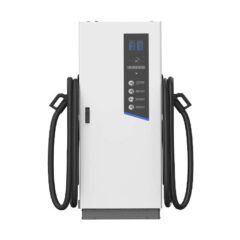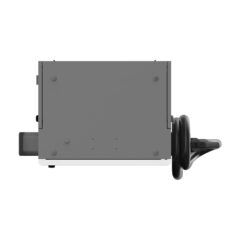How does home ev charging point work? Ultimate Guide
Green” cars are becoming more and more popular. An important part of this new technology is home ev charging point.

Every day more information about vehicles and how to use the electric car charger is emerging.
Today, it is already possible to find charging options that go beyond using a socket at home. Moreover, an example is the electric stations, which allow electric cars to be charged in a few hours.
In addition, there is induction charging. This one does not use any kind of wire to charge the car. We can say that, among all the importance involving electric cars, one of the main points is the charging method.
Therefore, we will talk a little more about their power supply. Keep reading!
What you will see here:
1 How does it work and where to charge an electric car?
1.1 Charging at home
1.2 Charging at public stations
2 Types of electric car charger
2.1 Home charger (EVSE)
2.2 Semi-Fast Charger
2.3 Fast charger (Kinouwell KW-PEVC3106)
2.4 Wireless charger
How does home ev charging point work?
Electric car charger – car charging
Normally, when purchasing electric cars – as well as plug-in hybrids – you already receive an electric car charger. You can install home ev charging point also.
That way, you already have access to the main form of power for your car, which can be charged directly at the home socket.
However, it is important that we inform you that this cable, usually connected to a three-pin socket, may need a circuit breaker adaptation.
However, the energy of the common electrical grid is more than enough to charge the batteries of your electric, through a 10A socket.
Therefore, we can consider that the loading can be done in two ways:
- At your residence;
- Moreover, at public charging stations;
- Let’s understand a little more about where to charge an electric car.
Home ev charging point
Home ev charging point takes place through a three-pin socket, connected to a common power source. This is what we call Level 1 loading. At this charge level, electric cars take more than 15 hours to charge.
In a common outlet, the Nissan Leaf – already on sale in Europe – takes 16 hours to have its full battery. However, it is possible to achieve better charging time at home. Similarly, for this, an adapter is used, plugged into a 220 V socket.
This is Level 2 charging, which brings more agility when feeding the electric car batteries.
Public home ev charging point
Even though Europe is not yet a major consumer of electric cars, urban adaptations are still being made for them.
An example is the installation of public charging stations.
This is the case of the partnership between BMW and EDP, which built one of the largest power supply networks in America, connecting many other countries.
There are still not many public charging points, but the trend is that, along with the increase in sales of electric cars, the number of stations such as the BMW electric bridge will also increase.
ELECTRIC CAR CHARGER TYPES
Considering the ways you can charge your electric, different chargers are also available. So you have the ideal home ev charging point. See what they are.
HOME CHARGER (EVSE)
The EVSE, Electric Vehicle Supply Equipment, is the most suitable electric car charger model for home charging.
Through simple adaptations, you can use the common current of the electrical network and feed your vehicle’s batteries.

The adapter for the residential socket is already purchased together with the electric car, which makes it possible to use it immediately after purchase.
Generally, an electric car takes at least 8 hours to fully charge with a home charger.
SEMI-FAST CHARGER
Garage and house adapted for electric cars 3
The semi-fast electric car charger is an alternative to regular charging, considered a level 2 home charger. With semi-fast, the charging time drops to about 3 hours. These chargers are easily adaptable for home garages, which facilitates the electric vehicle charging process.
Semi-fast home ev charging point is a very viable alternative, as the loading time is optimized. In addition, it is possible to connect it to renewable energy systems, such as solar panels.
Among the main options, we have to highlight the Kinouwell chargers. Among the semi-fast chargers, it presents excellent results in fast charging.
With kinouwell products, it is possible to charge the BMW i3 in just three hours. This electric car is already on sale in Europe!
FAST CHARGER Kinouwell KW-PEVC3106
Supercharger idle rate
Fast chargers can reduce the charging time of electric cars to just a few minutes.
With advanced technology, it is possible to power the batteries in less than an hour, which optimizes the use of electric vehicles. It is best to bring home ev charging point.
This is the case with Tesla’s Supercharger, which recharges vehicles’ batteries in 30 minutes, so that it can reach, at least, another charging station. However, it is possible to fully complete the charge at these stations.
We consider the technology developed by Tesla to be impressive, even more so when compared to the typical charging time of around eight hours.
To know the charging time of Tesla cars in a Supercharger, visit this post.
Wireless electric car charger
Home ev charging point is yet another innovation in the world of electric cars. Can you imagine being able to charge your vehicle without the need for a socket? Well, this is a real dream.
The charge, in these cases, is done from magnetic induction, without the use of any wire.
To charge the car, the driver simply stops it under an induction charger. After receiving power, it is transferred to a receiver that powers the batteries. Home ev charging point should not take long to become popular, considering that this is a very simple and dynamic loading method.
Summary
In addition, wireless charging can make electric cars more attractive to consumers, who consider battery power to be one of the main disadvantages of using such a model.

